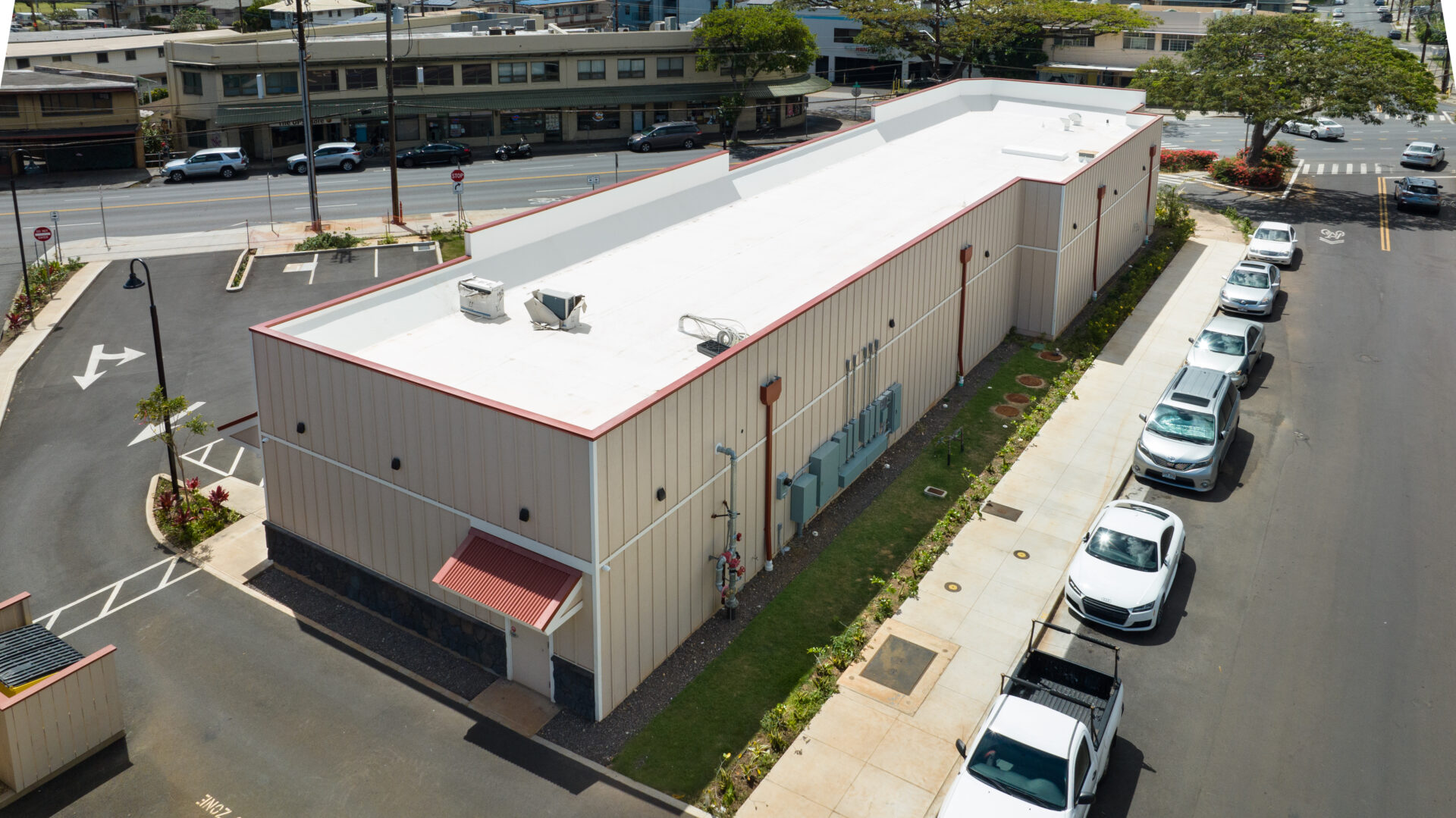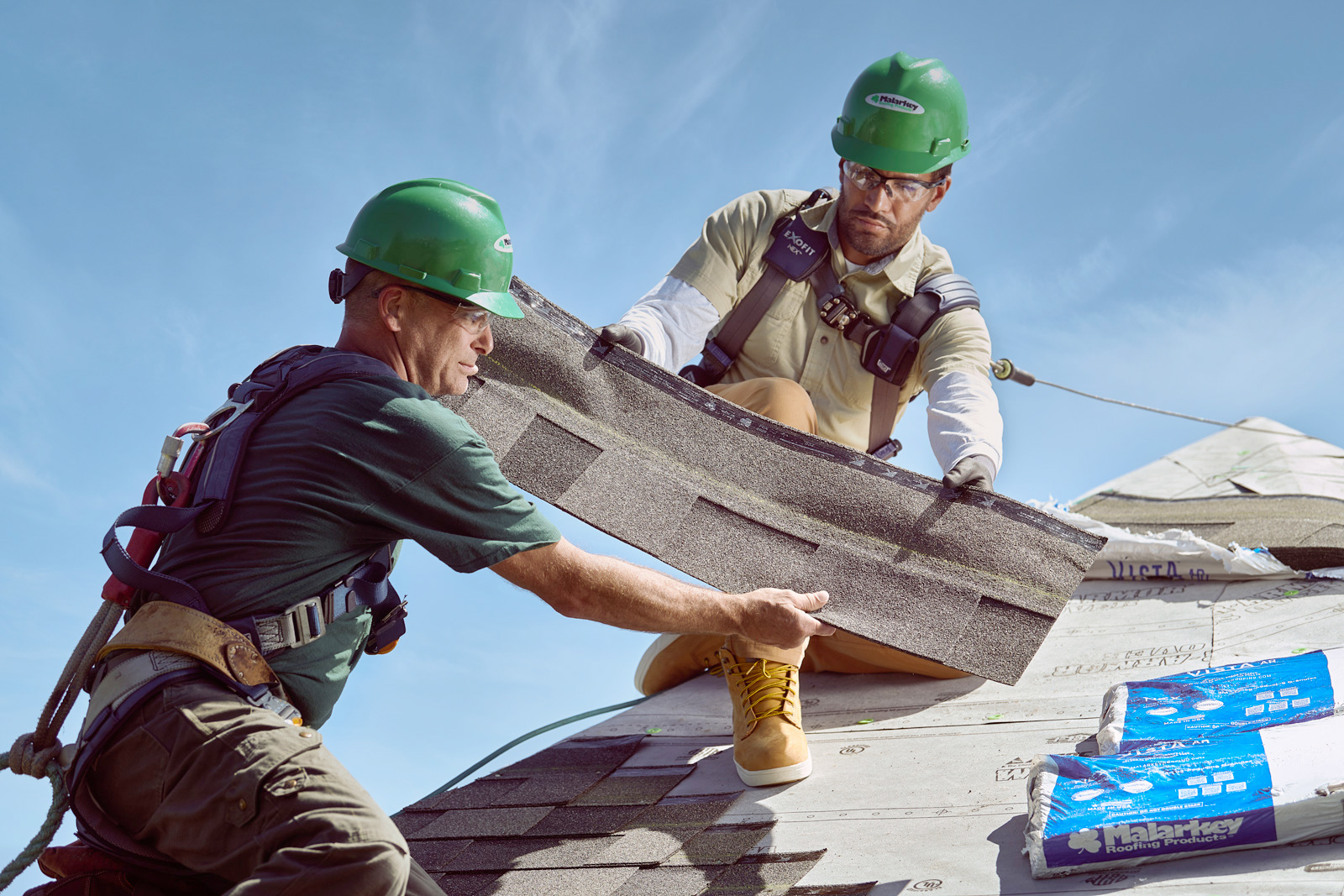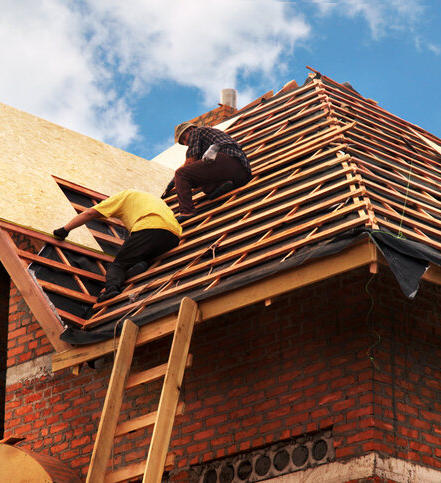Comprehending the Various Sorts Of Roofing and Their Benefits
Each roofing type-- from the affordability of asphalt roof shingles to the enduring stamina of steel and the classic allure of ceramic tile-- uses distinct advantages tailored to different requirements and choices. As we explore these choices better, a much deeper understanding of each roofing type's one-of-a-kind advantages may expose surprising insights that can impact your decision-making process dramatically.
Asphalt Roofing Shingles
When thinking about roofing alternatives, asphalt shingles typically emerge as a preferred selection as a result of their equilibrium of affordability, longevity, and visual appeal (honolulu roofing company). These roof shingles are composed of a fiberglass floor covering covered with asphalt and granules, giving a durable barrier versus weather condition components. Their lightweight nature enables simple setup, making them a recommended choice for both home owners and specialists
Asphalt tiles are available in 2 primary kinds: building and three-tab. Three-tab roof shingles are flatter and use a much more standard look, while architectural shingles have a thicker structure and provide a dimensional appearance. Both kinds can be found in a selection of colors and designs, allowing homeowners to customize their roof covering to enhance their home's style.
One of the key benefits of asphalt shingles is their cost-effectiveness; they are normally much less pricey than various other roofing products, such as floor tile or slate. Generally, asphalt shingles represent a visually attractive and practical roof remedy for several household applications.
Metal Roof Covering
Steel roof has actually gotten substantial popularity among property owners and builders as a resilient and energy-efficient choice to typical products like asphalt roof shingles. Making up products such as aluminum, steel, and copper, metal roofs are recognized for their longevity, frequently enduring 40 to 70 years with very little upkeep. This remarkable life-span significantly reduces the frequency of roofing system replacements, translating to long-term cost financial savings.
Among the vital benefits of metal roof is its energy efficiency. Steel shows solar induction heat, which can assist reduced air conditioning expenses in warmer climates. Additionally, many steel roof products are produced with recycled products, making them an eco pleasant choice.
Metal roofing systems are also very resistant to severe weather, including high winds, hefty rainfall, and snow. This strength reduces the risk of leakages and various other damage, giving satisfaction to homeowners. Furthermore, steel roof is available in different designs, colors, and coatings, enabling customization to complement any kind of architectural layout.
While the preliminary investment may be greater than traditional roof options, the long-term benefits of resilience, energy performance, and low upkeep make metal roof covering a worthwhile consideration for modern-day homes.
Tile Roof
Floor tile roof covering provides home owners a distinctive visual and outstanding durability, making it a popular option for numerous building designs, especially in warmer climates. This roofing material is offered in a range of forms, colors, and materials, including clay and concrete, enabling for flexible layout options that can enhance a home's curb appeal.
Among the main benefits of ceramic tile roof covering is its durability. With appropriate maintenance, ceramic tile roofs can last upwards of 50 years or more, outmatching many various other roof covering products. Their integral resistance to rot, pests, and fire additional adds to their allure. In addition, ceramic tile roof coverings can offer outstanding thermal insulation, helping to regulate indoor temperatures and potentially reducing power expenses.
One more advantage of ceramic tile roof covering is its low upkeep needs. While setup can be much more pricey contrasted to various other roofing kinds, the investment is frequently justified by the lasting financial savings on repairs and substitutes. Additionally, ceramic tile roof covering is eco-friendly, as numerous floor tiles are made from all-natural materials and are recyclable at the end of their life process.
Wood Tiles and Shakes
Timber shingles and trembles offer an all-natural appeal and heat that can enhance the visual of any kind of home, making them a prominent selection among homeowners that value natural materials. These roof options are traditionally made from cedar, redwood, or want, providing a rustic appeal that complements numerous architectural styles.

Wood shingles are machine-cut, providing an uniform appearance and smooth surface. On the other hand, drinks are hand-split, resulting in an extra textured and uneven look. This distinction can influence the general design and character of a home, with trembles usually lending a more tough, natural feel.
One of the primary advantages of wood roof is its exceptional insulation buildings, which can assist regulate indoor temperatures while decreasing power costs. Additionally, wood tiles and shakes can be treated with fire retardants and chemicals to boost their longevity and resistance to decay, insects, and dampness.
Nonetheless, it is necessary to take into consideration the maintenance requirements related to timber roof. Normal assessments, cleaning, and honolulu roofing company therapy are needed to prolong its life expectancy. When appropriately cared for, timber shingles and trembles can give a stunning and long-lasting roofing option that elevates any residential property's aesthetic charm.
Eco-Friendly Roof Covering Options
As ecological awareness grows, home owners are increasingly looking for environmentally friendly roof covering alternatives that not only decrease their carbon impact but likewise add to lasting living. honolulu roofing. These roof options are designed to decrease environmental effect while boosting power effectiveness and sturdiness
One preferred option is metal roofing, which is frequently made from recycled products and flaunts a lengthy life-span, lowering the requirement for regular substitutes. Steel roofings mirror solar warmth, therefore lowering power expenses. One more feasible selection is rubber roof, usually made from recycled tires, supplying superb insulation and resilience.
Environment-friendly roof coverings, which include plant life and dirt, offer natural insulation, assist with stormwater management, and improve air top quality. They are particularly useful in metropolitan areas, helping to alleviate the warm island effect. Additionally, solar tiles are gaining grip; they combine traditional roof materials with solar technology, permitting homeowners to create their very own electrical power while keeping visual charm.

Conclusion
In recap, picking the proper roof covering material demands cautious consideration of numerous aspects, including price, durability, and environmental impact. Asphalt shingles offer an affordable option with modest durability, while steel roof offers exceptional longevity and energy performance. Ceramic tile roof covering stands out for its aesthetic appeal and longevity, and timber shingles boost insulation yet require attentive maintenance. Environmentally friendly roofing choices add to sustainability and lasting savings, making them significantly attracting environmentally mindful homeowners.
